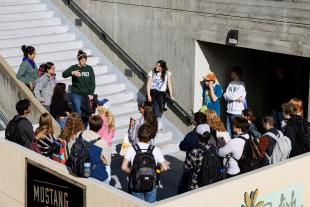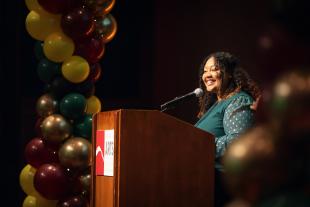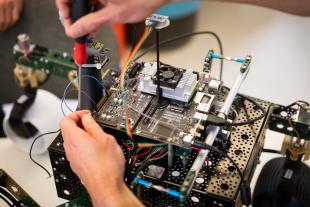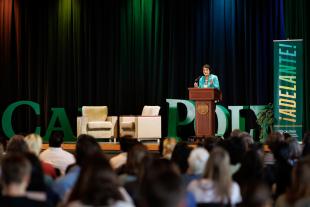Education Professor to Help CSU System Increase Faculty Diversity
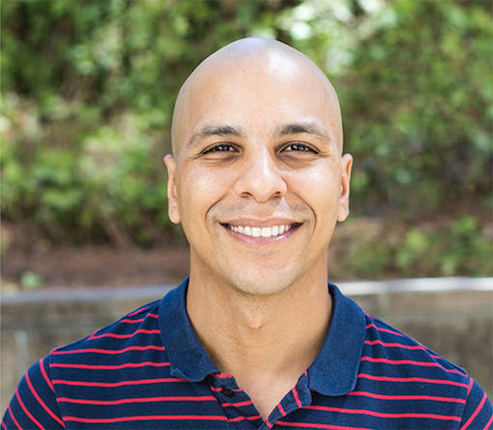
With a $2.7 million grant from the National Science Foundation, Cal Poly education professor Daniel Almeida aims to increase the retention of faculty of color across the California State University (CSU) system.
In science, technology, engineering and mathematics (STEM) fields, the area on which Almeida’s program focuses, underrepresented minorities make up less than nine percent of professors nationwide. Once hired, faculty of color face greater challenges than their white colleagues — such as a lack of integration into the academic community and lower research grant support.
“I’m interested in people thriving and being authentically themselves,” said Almeida, who is black, and has been at Cal Poly for three years. “I was struggling as an assistant professor, and I thought, what about people in STEM fields where social justice isn’t something they talk about daily? How are they experiencing being a new faculty of color?”
Nearly a third of the tenure-track assistant professors of color hired in the California State University system between 2000 and 2012 left their universities, yet a more diverse faculty improves the education of all students, according to multiple studies. Students of color benefit from role models with whom they can identify, and students of all backgrounds benefit from a greater diversity of course content and teaching methods.
“Having a critical mass of faculty of color can pay dividends in multiple ways for years to come,” Almeida said.
These faculty members are especially important in the CSU, which is the nation’s largest four-year public university system and educates the most ethnically, economically and academically diverse student body in the nation. Nearly one-third of CSU students are the first in their families to attend college and more than half of CSU graduates are the first in their families to earn a degree.
To increase retention, Almeida and a group of colleagues across four CSU campuses have designed a statewide program. The Cal Poly research team includes Camille O’Bryant, associate dean in the College of Science and Mathematics; Jane Lehr, ethnic studies professor with an honorary appointment in the College of Engineering; and Sonia Ramrakhiani and Andrew Byrne, both education professors.
The program combines a focus on what faculty do well with an understanding of the cultural challenges they face. People excel when they know what their strengths are and how to use those strengths in their work. Program participants will first take Gallup’s CliftonStrengths and the VIA Character Strengths assessments to identify and rank their natural talents.
Because systems of privilege and oppression affect how people can use their strengths, the program also focuses on social justice. Faculty from historically marginalized groups face added challenges and barriers to using their strengths. For example, black women who are natural leaders are not given the same opportunities to lead as white men are. Participants will receive coaching on how to succeed by taking these challenges into account when developing their abilities.
The program is also designed to create a professional network that stretches across California to help address the isolation many faculty of color experience.
“We need each other in this world,” Almeida said. “Students and faculty of color need these networks of support that white students and faculty have always had, and we’re creating those.”
With senior faculty acting as coaches for new faculty at other campuses, the network will grow to include all 23 CSU campuses over the course of three years. Participants in the project will meet for two annual retreats to solidify their relationships in person and participate in web-based workshops and coaching throughout the academic year. As part of the grant, the impact of the program will be assessed after three years.
“This addresses the big picture of how we treat each other,” Almeida said. “What would the world be like if we focused on and developed what’s right with each other instead of what’s wrong?” “Higher ed should be a place for testing out some of these ideas.”

